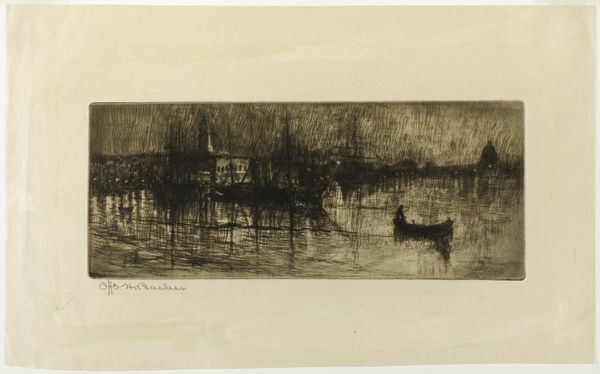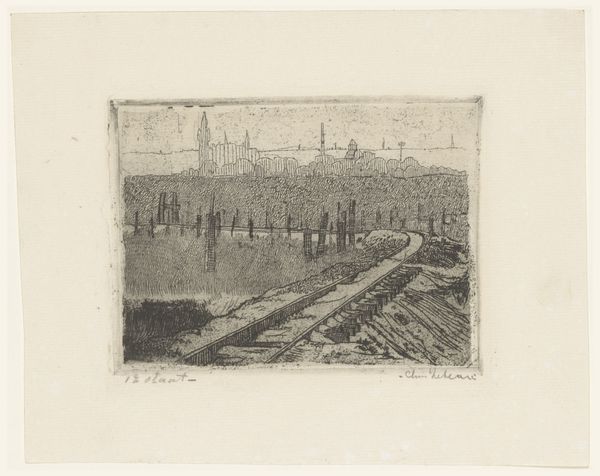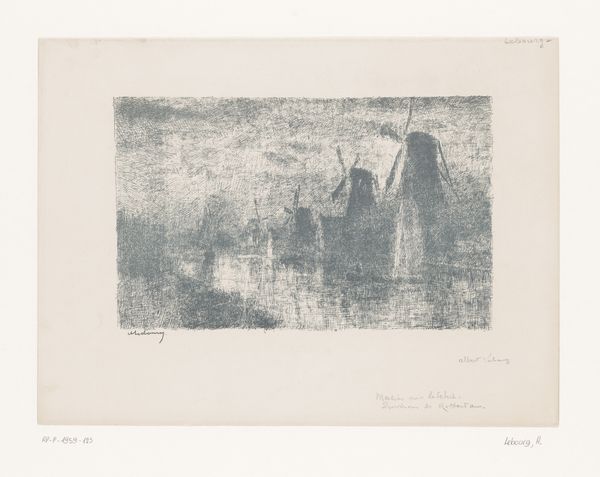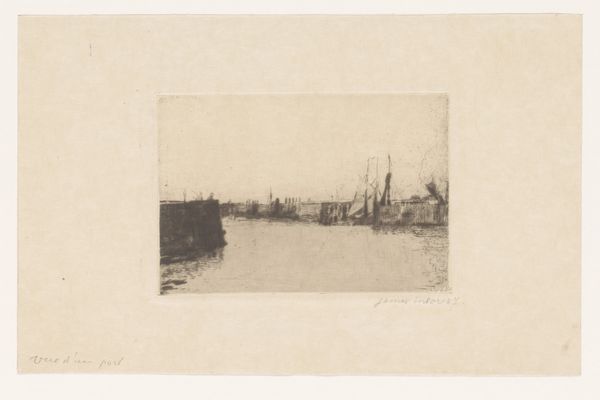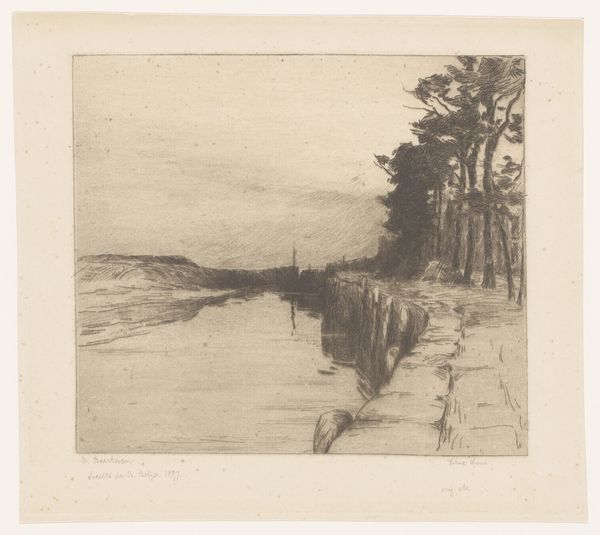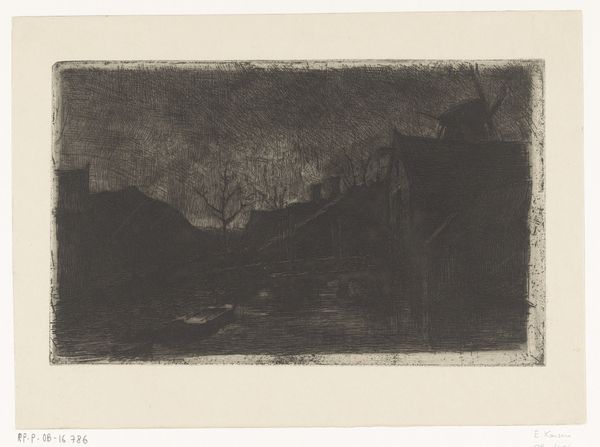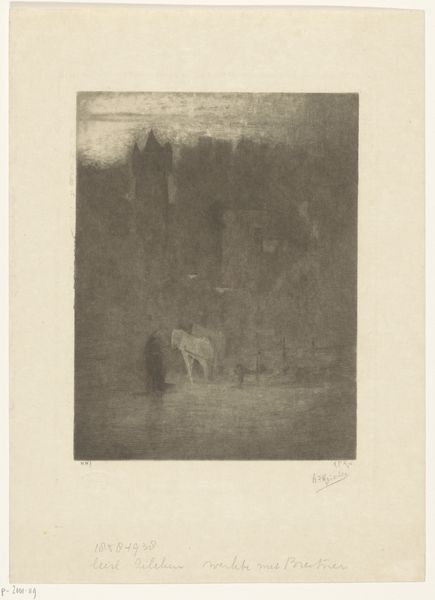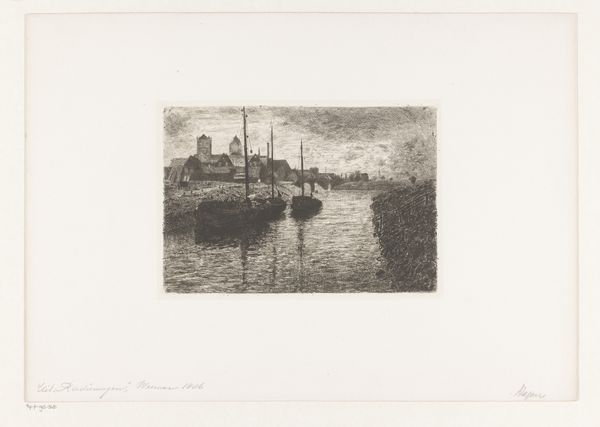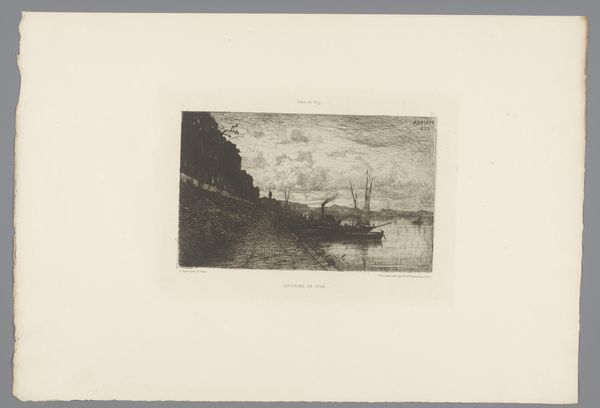
print, etching
# print
#
impressionism
#
etching
#
landscape
#
cityscape
Dimensions: height 109 mm, width 138 mm
Copyright: Rijks Museum: Open Domain
Curator: Immediately, I'm struck by the sheer atmospheric gloom of this print! It’s almost suffocating. Editor: This is Norbert Goeneutte’s "View of the Houses of Parliament in London," an etching from before 1888, here in the Rijksmuseum’s collection. The Thames dominates, doesn’t it? And it all leads us towards that iconic building. Curator: Absolutely. The etching process here is key; look at the almost frenetic lines used to create texture, that haze hanging in the air. He's used those horizontal marks suggesting the boards of wood leading into the Thames as foils to draw the viewer into the deeper perspective, where more careful vertical hatches represent Parliament's architecture. The scale emphasizes industrial processes; the physical labor embedded in etching creates the buildings themselves, in this light industrial landscape. Editor: Precisely. London in this period was the heart of an empire, both celebrated and contested. Goeneutte gives us a sense of its power, yes, but through a distinctly melancholic lens. It’s not a triumphal image; it feels… compromised, weighed down by something. Curator: Think about the etcher’s workshop – the biting acids, the press, the repetitive action. It’s about more than a mere vista; he communicates the sense of living with that political apparatus. The buildings loom oppressive despite their location in the distance and his artistic attempt to place them into a hazy perspective. The boats along the shore lead into an ominous perspective despite their small, seemingly simple place in the work. The buildings of Parliament dominate the composition's narrative, both in presence and labor intensity required for creation. Editor: And London, of course, was infamous for its air pollution even then. Turner captured the same sense of obscured grandeur in paint. Here, Goeneutte's use of print makes us feel the soot and shadow permeating even the visual experience of London. Think about how these views become crucial components in defining the city's identity and branding its history across a wide audience thanks to the accessibility and low cost of prints. Curator: So, what we have is not merely a depiction, but a gritty commentary created by industrial means, commenting on an industrial landscape, with the buildings representing all of what London held—social class differences and an enormous working-class production. Editor: Indeed. It makes you wonder about the lived experiences, power structures, and their impact, made so evocative here. Curator: A darkly material statement! Editor: Exactly. The convergence of economics and history and the artist's role within that… fascinating.
Comments
No comments
Be the first to comment and join the conversation on the ultimate creative platform.

